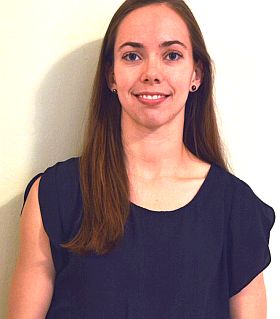Important new insights into how our bodies actually metabolise the selenium in popular anti-cancer supplements have earned University of Adelaide researcher Dr Claire Weekley the 2014 Australian Synchrotron Stephen Wilkins Thesis Medal.

An essential trace element, selenium is believed to reduce the risk of some forms of cancer. However, too much can adversely affect our health. Clinical trials of selenium supplements have been inconclusive or contradictory. According to Claire, the key is in the way our bodies approach the different forms of selenium – organic and inorganic – found in our diets.
Claire completed an outstanding PhD in just over three years, an impressive achievement that underscores her potential to become “one of Australia’s top practising research scientists”, to quote her PhD supervisor, Professor Hugh Harris.
For her PhD, Claire combined synchrotron x-ray imaging and analytical techniques to overcome a major problem with standard laboratory techniques for analysing selenium in biological samples, which involve sample preparation methods that can alter the nature of the selenium in the samples.

Claire's synchrotron techniques clearly identified both the location and the chemistry of selenium as it’s modified by the normal metabolic processes going on inside our bodies.
“One exciting finding that requires further investigation is that selenium and copper are found together, but may not be chemically bound to each other,” Claire said.
An eminent Australian researcher who reviewed Claire’s thesis described it as “an outstanding contribution to understanding the biochemistry of selenium and ... full of new discoveries on the metabolism of selenium delivered in supplements”.
Claire has already authored seven papers in peer-reviewed research journals, and been a co-author on several others. Her most recent paper, published in September 2014 in Metallomics, was featured on the journal’s front cover. She is now working as a postdoc with Prof. Chuan He at the University of Chicago.
Weekley CM (2014), XAS and XFM studies of selenium and copper speciation and distribution in the kidneys of selenium-supplemented rats, Metallomics, 6, 1602-1615.
